Blog
A Nod from Nancy: Seahawk, Confessions of an Old Hockey Goalie by Bruce Valley
This book surprised me–in a good way. A publicist  contacted me out of the blue and asked if I would review it. I was a little nervous because I prefer to write positively about books and I didn’t have any idea what to expect from Seahawk. Below is an excerpt from my review. If you’d like to read the full review, it’s on Amazon.
contacted me out of the blue and asked if I would review it. I was a little nervous because I prefer to write positively about books and I didn’t have any idea what to expect from Seahawk. Below is an excerpt from my review. If you’d like to read the full review, it’s on Amazon.
Seahawk is a love story. It’s about the love of hockey in its purest form: pond hockey, or “shinny” as it was called in Rye, New Hampshire in the 1940s, played outdoors on the most elemental of surfaces: “black ice”. It’s about how a group of World War II veterans who loved the game gave a small town a sense of pride and identity, starting a hockey team from scratch and turning it into a powerhouse that made it all the way to the Class B championships in Boston Garden. Finally, it’s about one man’s life-long passion for the game from his days as a fourteen-year-old goalie with the Seahawks to his debate about when it’s time to hang up the pads.
Although author Bruce Valley is a former test pilot and an aerospace executive, he’s also a poet and it shows in this memoir. He writes with profound emotion and insight about the hockey-playing war veterans he hero-worshipped when he was young, and admired even more when he grew up to understand the sacrifices they had made. He paints the depth of devotion required to keep a team going when Mother Nature repeatedly threw her worst at their home-made outdoor “pond”. He vividly describes the wide-eyed fascination he felt when he saw his first game of “shinny” at age three and how that excitement has never left him. I often found myself reading with tears in my eyes, not an experience one usually associates with a book on the intense, hard-charging sport of hockey.
What do you do with a llama?
While visiting my Darling Daughter at her college in the cornfields of Ohio, I was delighted and intrigued by three llamas wandering about in a field we drove past. I stopped to say hello and got greeted with much interest by the Head Llama (below) who found my camera irresistible.
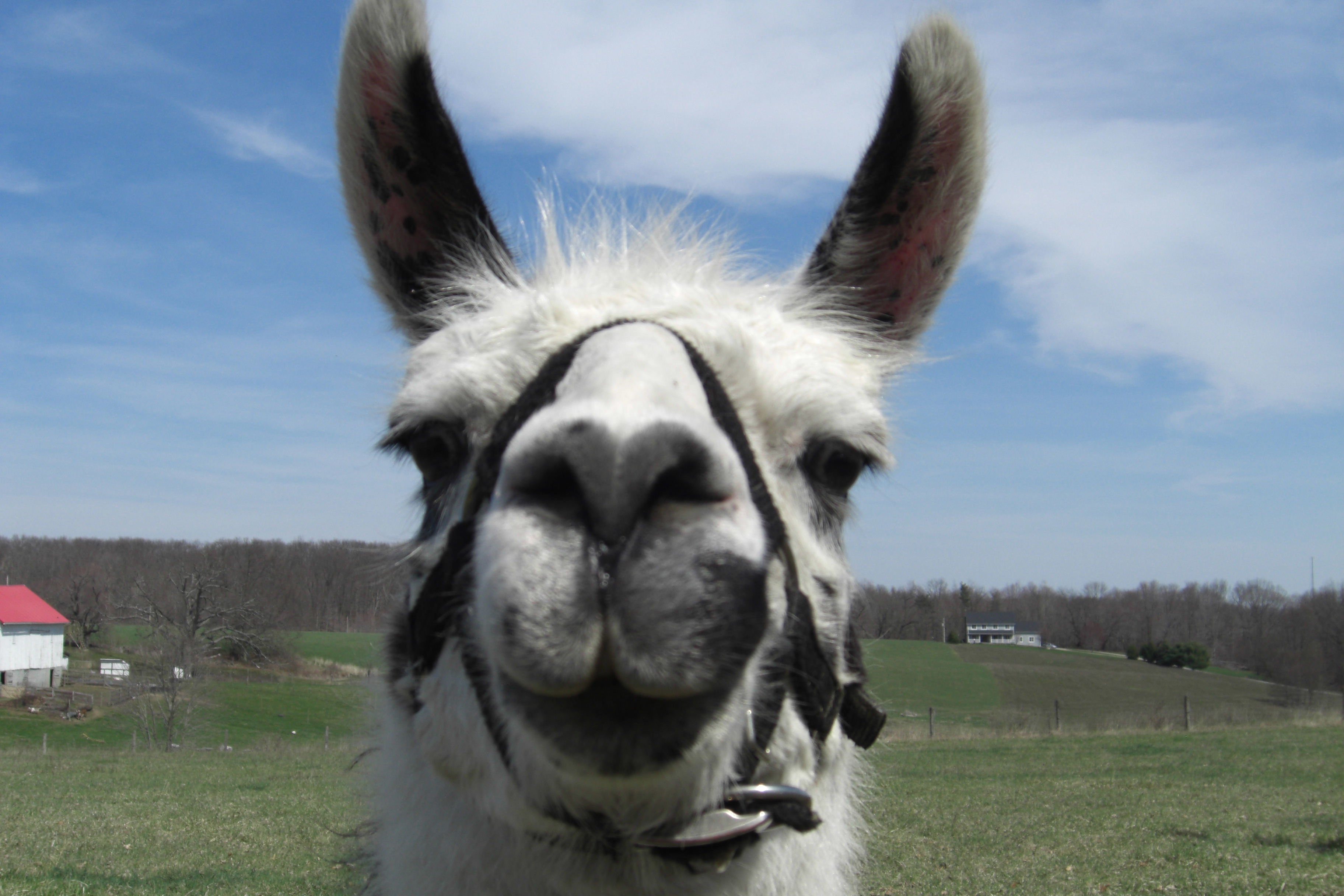
As I communed with the Head Llama I began to wonder what exactly one keeps a llama around for. So when I got to a computer I asked the internet. Here’s what I found:
Llamas are camelids, along with the alpaca, the guanaco, and the vicuna. They’re thought to be related to the Bactrian and Dromedary camels of Asia. Baby llamas are called “crias’.
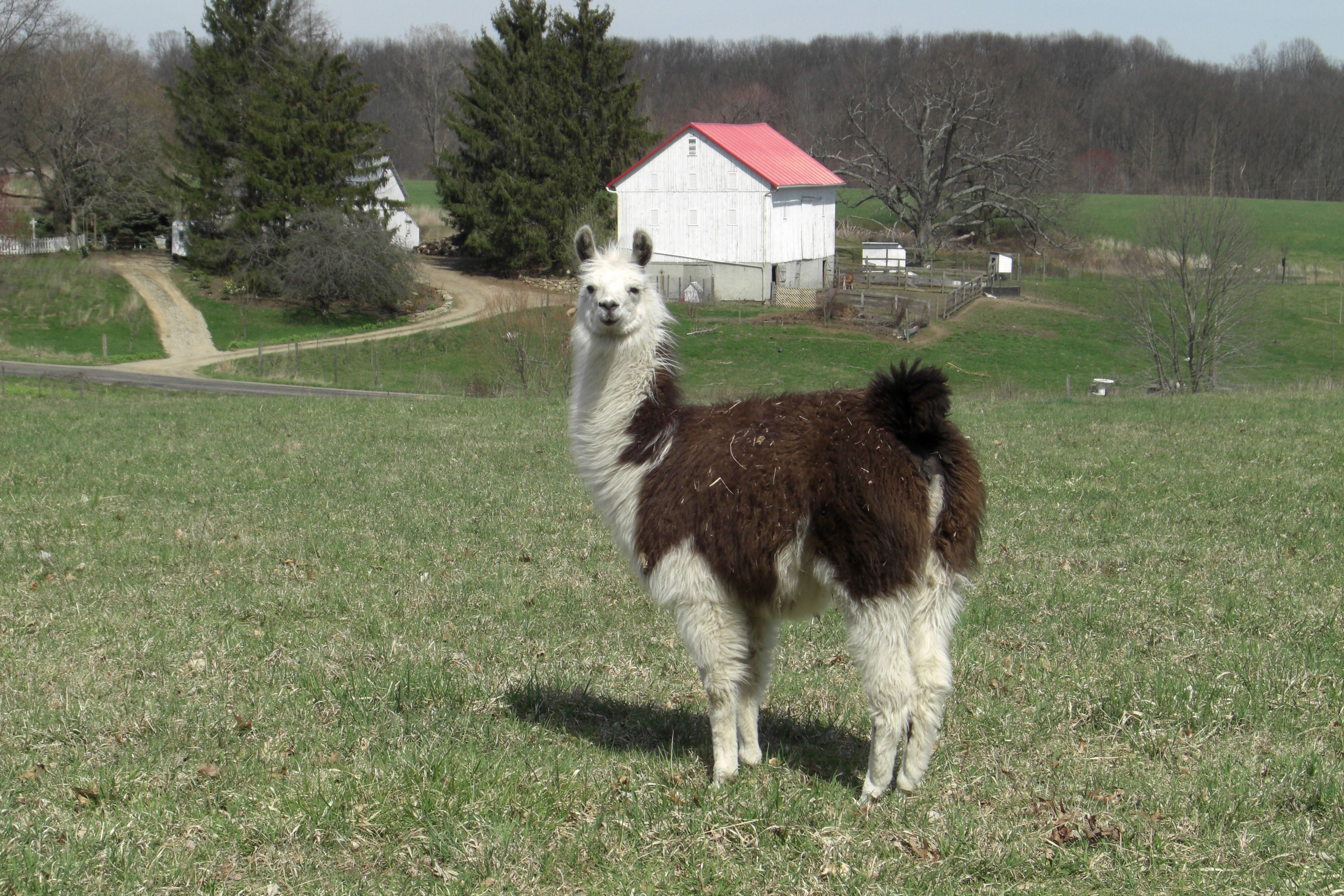
They make excellent pets and companions because of their “low-key temperament, intelligence and ease of maintenance.” The latter assumes you have large fields around your house; I don’t think it would so easy to maintain one in suburban New Jersey. They make wonderful hiking and jogging companions (I’m not joking–I got this information from a llama website).
Llamas are terrific pack animals because of their “thriftiness” which I think goes back to the low-maintenance thing. Evidently they are in demand for wilderness packing in the mountainous regions of the western United States. You can also hitch your llama to a cart and ride around in it.
Their wool is very nice although not used for mass production. They have been known to keep predators away from flocks of sheep. Llamas can also be eaten although that seems sort of creepy if they are your jogging companions and the guardians of your sheep.
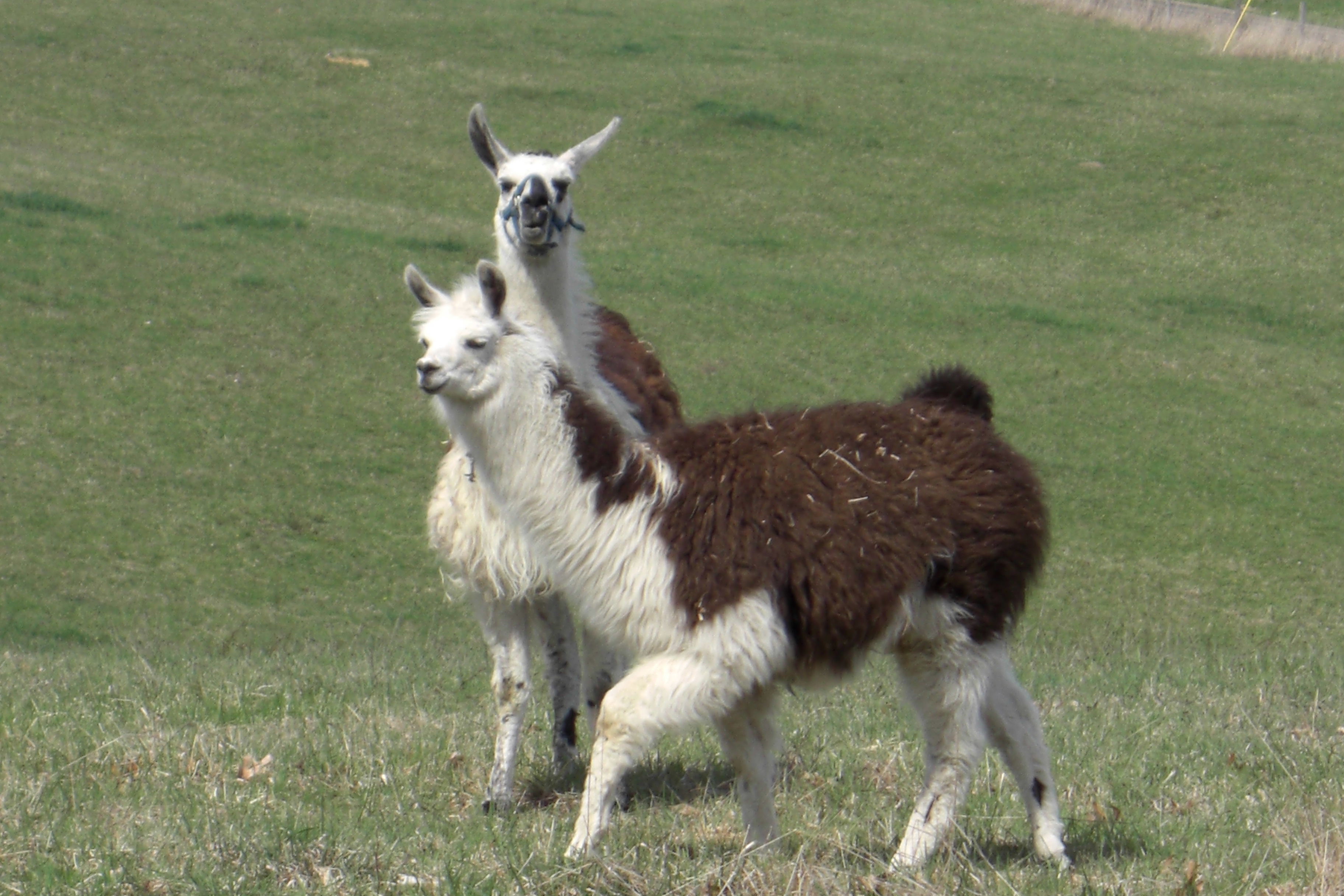
I guess the main reason to keep them around is that they’re downright cute, or, as one website crowed, “Llamas make you happy!”
A Nod from Nancy: Out Stealing Horses by Per Petterson

Out Stealing Horses is one of those books you read too fast the first time through because the story and the writing are so compelling you can’t slow yourself down. However, you know you will read it again to catch all the marvelous layers and nuances you raced past the first time.
Sixty-eight-year-old Trond Sander moves from Oslo to a remote rundown cabin in the forests of eastern Norway to escape a tragedy in his past. The cabin’s setting (and his nearest neighbor) send his mind spinning back to the year he was fifteen and spent the summer with his father in a similar cabin. One of the book’s great beauties is Trond’s perspective on the events of the summer: he is both the boy living through it and the man trying to make sense of it. To call it a coming-of-age story does not do the book justice; the adult Trond’s history is as much a part of the story as the teenaged Trond’s.
The frame of the older Trond’s daily activities—repairing the cabin, cutting up a fallen tree, walking the dog—surrounds and illuminates the young Trond’s summer of felling logs, getting into mischief with his best friend, and camping with his father. Trond comes to understand the things he witnessed as a teenager but did not fully grasp: the aftermath of a tragic accident, the impact a war has on the people who survive it, and the complexities of his own father.
Mr. Petterson (with the help of translator Anne Born) writes with a spare beauty that grabs the reader immediately. He mines humor from the day Trond and his father did handstands naked in the rain. He perfectly describes the not-quite-relationships of casual neighbors:
People like it when you tell them things, in suitable portions, in a modest, intimate tone, and they think they know you, but they do not, they know about you, for what they are let in on are facts, not feelings, not what your opinion is about anything at all, not how what has happened to you and how all the decisions you have made have turned you into who you are. What they do is they fill in with their own feelings and opinions and assumptions, and they compose a new life which has precious little to do with yours, and that lets you off the hook.
He writes with breathtaking imagination about death:
…I thought about how it must feel to lose your life so early. Lose your life, as if you held an egg in your hand, and then dropped it, and it fell to the ground and broke. And I knew it could not feel like anything at all. If you were dead, you were dead, but in the fraction of a second just before; whether you realized then it was the end, and what that felt like. There was a narrow opening there, like a door barely ajar that I pushed towards, because I wanted to get in that crack that came from the sunlight on my eyelids, and then suddenly I slipped inside, and I was certainly there for a little flash, and it did not frighten me at all, just made me sad and astonished at how quiet everything was.
However, all of Mr Petterson’s observations are firmly grounded in the earthy reality of the forest, the river, and the living creatures around Trond. Horses, dogs, cows, and various birds trot and fly through his past and present, tying him always to the natural world. The book opens with titmice crashing into his window and his comment that “I don’t know what they want that I have.” Norway’s dramatic weather impacts both mood and action, and the reader is always aware of the elements and what effect they have on the story.
Mr. Petterson looks into the human psyche with perception, compassion, and an occasional wry smile. Now please excuse me while I re-read this glorious book.
You lucky blog readers got a full review of this book because I write reviews for a local publication and included this book. Hope you enjoyed the longer version of my recommendation. My apologies for the slightly odd formatting; when I copied in the review it went all wonky on me and I can’t get it to straighten out. Fortunately, it’s still readable, I think.
Best Valentine’s Day gift ever!
We had houseguests with small children on February 14th which was not very romantic, so DH and I agreed to reschedule our personal Valentine’s Day. We just celebrated and look what my wonderful, amazing, thoughtful husband gave me:
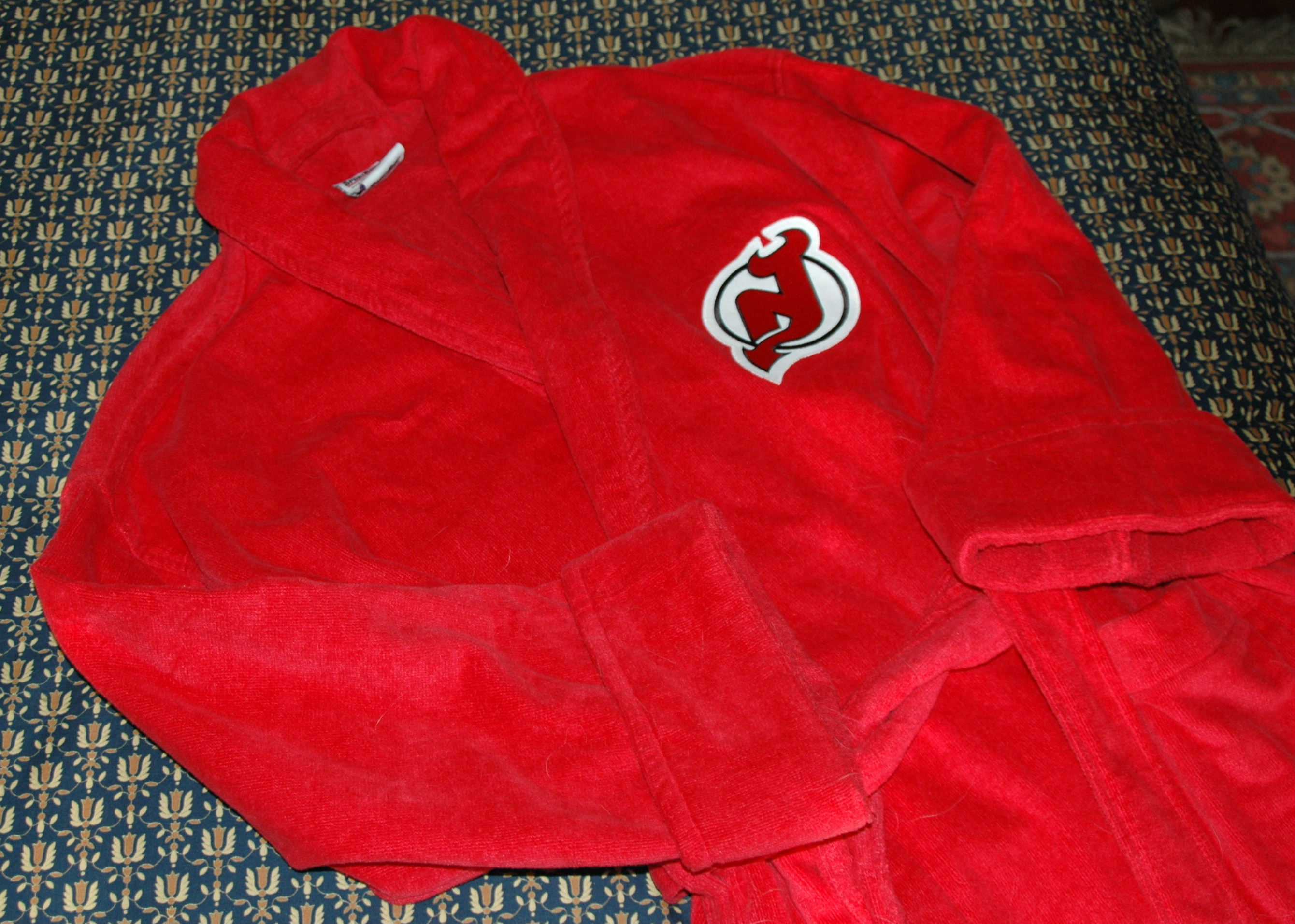
It’s red, it’s worn in the bedroom, and IT HAS THE DEVILS’ LOGO ON IT! You just can’t get any more romantic than that.
Oh, what a night!
Warning: long post with lots of pictures and exclamation points!
St. Patrick’s Day evening at Prudential Center (aka, The Rock) in Newark, NJ. Devils goalie Martin Brodeur is tied with Patrick Roy for most games won in an NHL career (551). Tonight could be the night Brodeur breaks the record. AND I WAS THERE!

Here’s Brodeur stretching before the game begins. He said he was thinking he just wanted it to be over, not to drag on for two or three or four games. He didn’t want breaking the record to become a disturbance to his team. Because he’s all about being a team player.

The Devils jump out to an early 1-0 lead with a goal by captain Jamie Langenbrunner. Below you see the team in full defensive mode around their future Hall of Fame goalie.

Travis Zajac scores a second goal, and The Rock is rockin’! When Patrik Elias (below) gets an assist on a goal by Brian Gionta, HE breaks a record: for most points scored (702) by a Devils player, beating John MacLean. Very appropriate on St. Patrick’s Day!

The crowd chants “Pat-rik El-i-as!” over and over again.

Then the audience goes back to cheers of “Mar-ty! Mar-ty!” and “Mar-ty’s bet-ter!” and “Thank you, Marty!” as Brodeur makes the save.

Everyone’s feeling really good until Chicago scores TWICE and makes the game tight at 3-2 (the score with which Marty most frequently wins his games, BTW). Now the crowd is tense and focused on every move in the game.
When there are only seconds left in the game, Devils defenseman Bryce Salvador has had enough of the tension and literally falls on the puck to put an end to Chicago’s scoring chances. The buzzer sounds. Marty leaps straight up into the air. The crowd goes insane. The Devils swarm their goalie to congratulate him.

Marty saws away at the net to take it home as a souvenir of his record, a tradition the former record-holder Patrick Roy began. However, hockey nets are sturdy since they’re meant to stop pucks flying at 100 miles an hour. It takes a couple of teammates’ help (including backup goalie Kevin Weekes below) to finally free the cording from the frame.
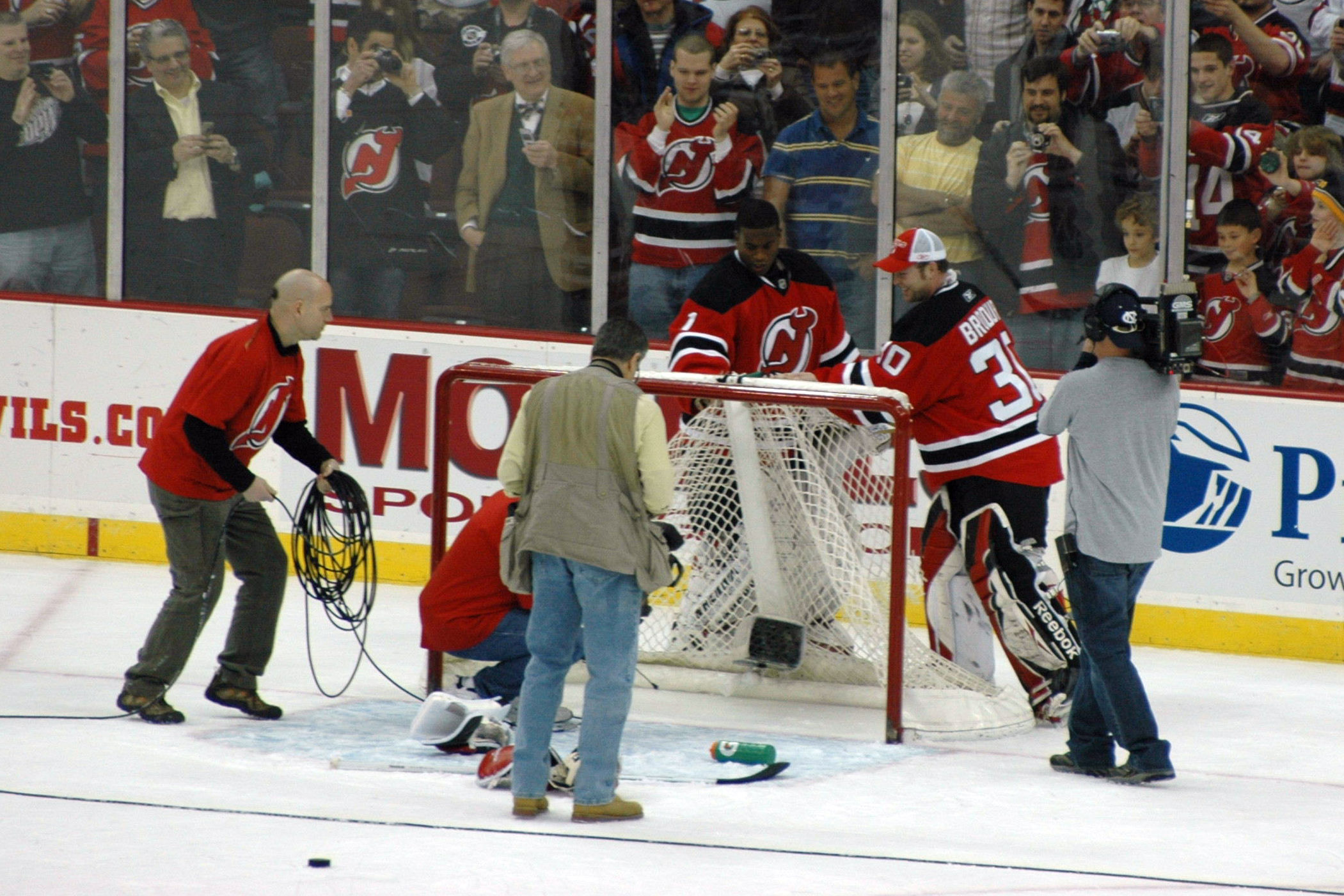
Here’s a happy Marty with his net, skating off the ice.

It still gives me chills thinking about the emotion in that arena last night. Martin Brodeur could have a gone to a lot of other teams and made a lot more money (in fact, the goalie playing opposite him last night makes more than our Marty) but he’s stayed with the Devils for his entire NHL career. He’s considered a very normal, affable guy (which is unusual amongst goalies who tend to be weird and idiosyncratic). Maybe his comment about why he’s stayed says it the best: “I never thought about going somewhere else because my grass is green enough here.” There you have the philosophy of the greatest goaltender in NHL history.

And I was there.
I’m not the only one!
For those of you who think I’m totally insane, I wanted to quote this little item from The Hockey News:

Columbus netminder 20-year-old Steve Mason’s hockey idol is (NJ Devils goalie) Martin Brodeur. Mason’s bedroom in the family’s Oakville, Ont., home is painted Devils red and filled with Brodeur memorabilia. Even the family’s miniature schnauzer is named Brodie, after the New Jersey stopper.
(See my previous post if you don’t already know why this seems perfectly normal to me.)
Brodie the Snow Dog

Yes, there’s still snow here in New Jersey, but Brodie’s happy. He loves to frolic in the white stuff with his favorite stick. Personally, I’m ready for spring.
A Nod from Nancy: Creation in Death by J.D. Robb
 I adore all the J. D. Robb books but must warn any new reader that they are a series (and I’ve lost track of how many there are but I suspect it exceeds 20). You will undoubtedly get more from any of the books if you read at least the first five or so in order. However, each book very much stands on its own, in my opinion. Creation in Death was absolutely terrific in every way.
I adore all the J. D. Robb books but must warn any new reader that they are a series (and I’ve lost track of how many there are but I suspect it exceeds 20). You will undoubtedly get more from any of the books if you read at least the first five or so in order. However, each book very much stands on its own, in my opinion. Creation in Death was absolutely terrific in every way.
The “In Death” books are described as futuristic police procedurals which sounds a little off-putting. They are really suspense/thrillers set in New York City about 50 years in the future. The future part only comes in when NYPD Lt. Eve Dallas or her hunky Irish super-entrepreneur husband need a neat gizmo to help solve the crime. Mind you, they mostly use brain power and good police work but occasionally a flying car or souped-up security device comes in handy.
Mostly it’s the main characters and the supporting cast that are such a pleasure, like visiting with old, extremely interesting friends. The story is always gripping which is why I am very careful about starting a J.D. Robb novel: I find it almost impossible to put it down until I’ve finished.
Adirondack Adventure
For his winter vacation, our son announced he wanted to go skiing. Not water-skiing, downhill skiing. My DH and I looked at each other and wondered where this mutant being came from. Our family usually spends the winter break someplace where you can bask in the warm sunshine on a white beach and paddle through turquoise blue waters with brightly colored fish for company. Downhill skiing involves SNOW which involves COLD which we have plenty of in New Jersey in February.
However, being the agreeable parents we are, we booked a hotel in Lake Placid, New York, in the heart of the beautiful, SNOWY Adirondacks. Amazingly enough, we had a great time. I don’t do downhill skiing. Been there, done that, have a bad knee to prove it. However, I managed to find lots of other fun things to do in the COLD.
Here I am skating on the 400-meter oval where Eric Heiden won his 5 gold speed-skating medals in 1980. It’s a loooong way around this track!

Here I am with my DH snow-shoeing through the alpine forest of the Adirondacks. That’s a workout!

I also went cross-country skiing but didn’t manage to bring my camera for that. I even talked DH into trying it; he’s REALLY not into cold weather. But he said he’d try it again. What a trooper!
My last activity was something I’ve always, always wanted to do: ride in a dog sled across a frozen lake. Mush!

I wasn’t allowed to “drive” but riding was a blast. DH and I were tucked snugly under a blanket as we flew across the ice.
This is how I survived all my unaccustomed activities:

Our hotel’s fabulous hot tub. It bubbled away all my muscle aches and pains before I even knew I had them. There’s something very decadent about sitting submerged up to your chin in warm, frothy water while snow swirls by the window outside.
Ahhhhhh!
Fun fact: This gorgeous region is actually named after an insult. Evidently the Iroquois disliked the Algonquin tribes who lived here and called them by the derogatory name Adirondack which means literally “bark-eaters.” Who knew?
Another reason I love hockey players
When Sports Illustrated asked Bryan Little of the Atlanta Thrashers to name his favorite super-model, he responded, “I don’t really like tall skinny girls.”
Music to the ears of a short, curvy woman!

